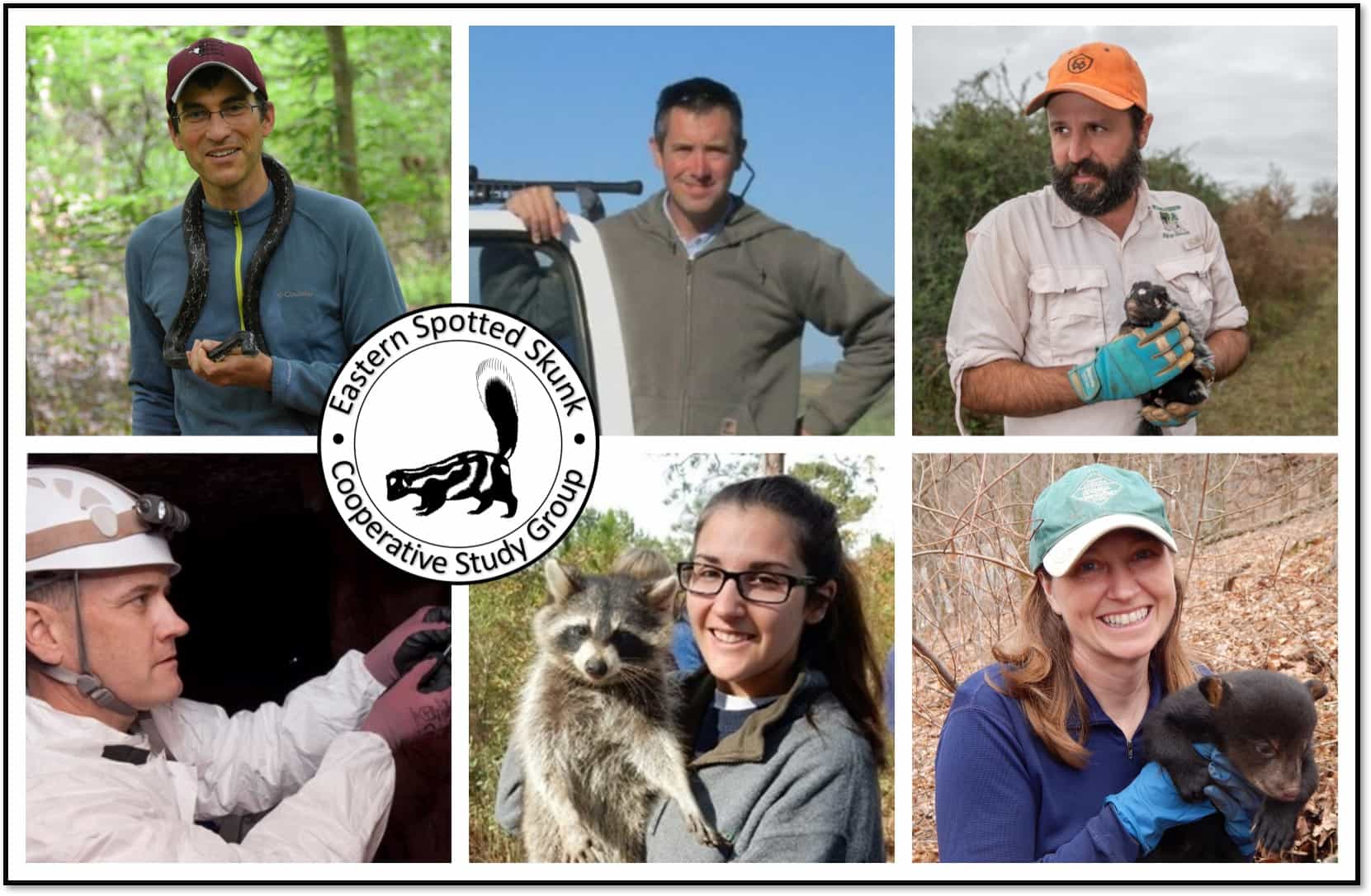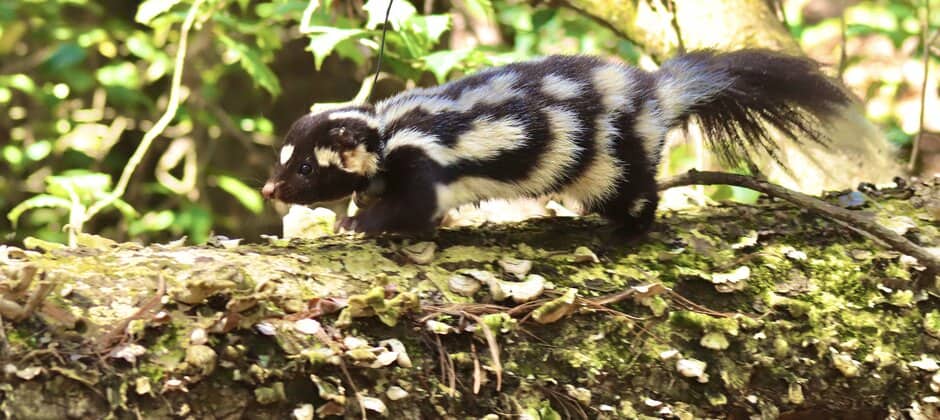Share this article
Eastern Spotted Skunk Cooperative Study Group recognized
When biologists started noticing a decline in eastern spotted skunks, states began listing it as a species of conservation concern. But scientists realized the species needed a broader collaborative effort across its range. In response, the Eastern Spotted Skunk Cooperative Study Group was started in 2015.
The group has recently made strides in protecting spotted skunks, including maintaining an Eastern Spotted Skunk Conservation Plan, facilitating research on the lesser known species and meeting regularly to share ideas about the small carnivores. These have earned the group The Wildlife Society’s 2022 Group Achievement Award. (See more about the group, and about spotted skunks in the upcoming September/October issue of The Wildlife Professional.)
“We have three main goals as a group,” said Andrew Edelman, a professor of biology at the University of West Georgia and chair of the Eastern Spotted Skunk Cooperative Study Group. “To enhance communication among members, wildlife managers and researchers working on the species, identify important management and research priorities and facilitate collaborative planning and outreach. We have done a number of things to accomplish those goals.”
In the early 2000s, analysis of historic furbearer harvest records from 1930-1995 tipped off researchers that eastern spotted skunks (Spilogale putorius) might be facing problems. The growing use of game cameras has also helped researchers learn more about the cryptic species.
With the creation of the spotted skunk study group and the use of new technology, scientists have seen a 600% annual increase in publications on spotted skunks from 2016 to 2020. Researchers have tapped into expertise from group members, and a 21-paper special edition about spotted skunks in the journal Southeastern Naturalist increased wildlifers’ knowledge about the species.
“These efforts have helped state and federal agencies figure out what they need to do with the species as far as management decisions.” Edelman said. A federal listing decision is scheduled for publication in the fall of 2023 to determine whether the midwestern populations should be listed or not under the Endangered Species Act.

Leadership of the Eastern Spotted Skunk Cooperative Study Group.
Credit: Eastern Spotted Skunk Cooperative Study Group
The group’s regular meetings and symposia have also increased members’ ability to share successful monitoring methodologies for a species that has such a low density and is difficult to capture. The group also maintains a listserv to keep researchers up-to-date about recent publications, projects, and data requests. They are also consistently updating the Eastern Spotted Skunk Conservation Plan, a “living document” designed to help spotted skunk researchers determine which knowledge gaps need to be filled and to help prioritize areas of research.
In addition to these successes, the group has encouraged the public to report species sightings by sharing promotional materials and creating its own iNaturalist page. “We have over 180 verified sightings on our iNaturalist page across 14 states with 80 observers,” Edelman said. These crowdsourced data have played an important role in helping researchers document the current species distribution.
The group has also contributed to important genetic findings about the carnivores. Members have donated spotted skunk tissue samples to researchers, allowing them to confirm the existence of three distinct subspecies of eastern spotted skunks. Then last year, contributed samples and museum specimens allowed them to determine that the plains spotted skunk (Spilogale interrupta), once considered a subspecies of the eastern spotted skunk, was actually its own species. “That wouldn’t have been possible without having the group to tap into,” Edelman said. The study group has even inspired others to be established, including ones for island spotted skunks (Spilogale gracilis amphialus) and weasels.
Edelman credits the award to the work of the study group’s 170 members, including representatives from state and federal agencies and universities. “I think for us it’s validation of all that effort, commitment and time we put into studying this really cryptic, elusive carnivore,” he said. “It’s exciting to see that come to fruition and to be recognized by a prestigious group like The Wildlife Society.”
Header Image: Eastern spotted skunks are cryptic and hard to study. Radio collaring them has revealed information about their movement, survival and behavior. Credit: Greg Detweiler








